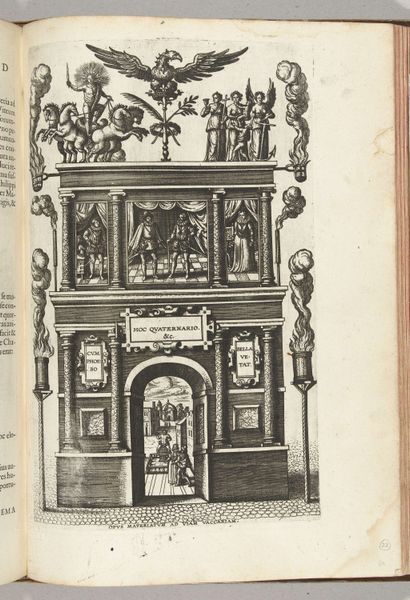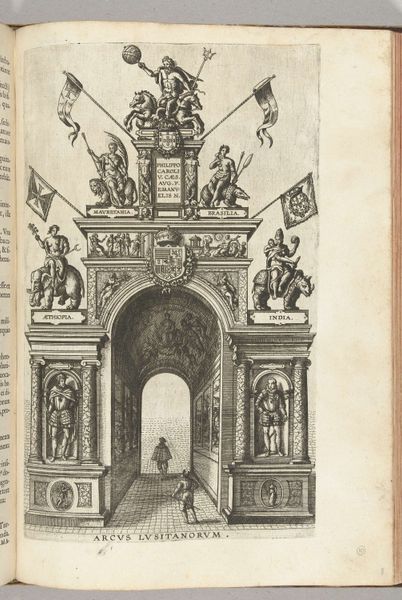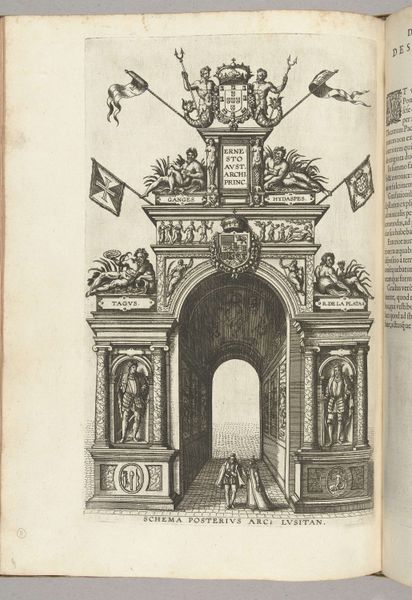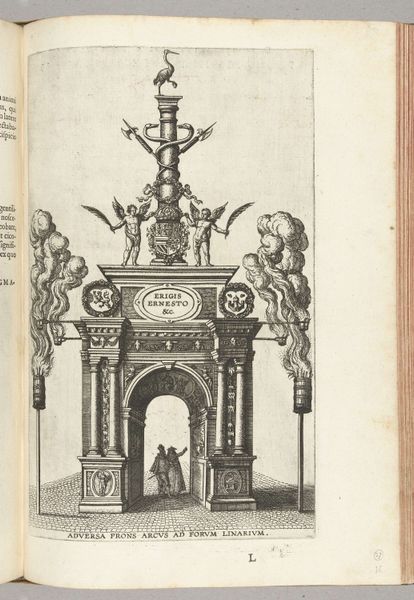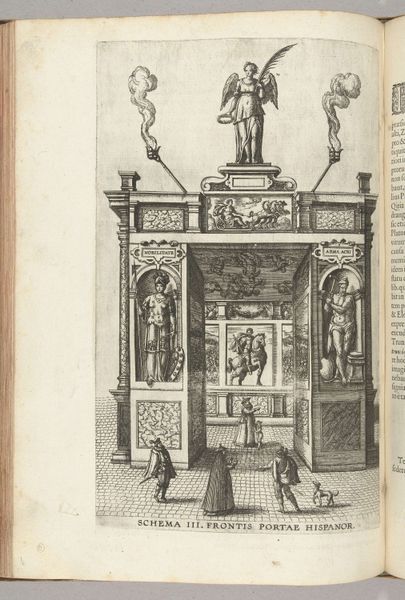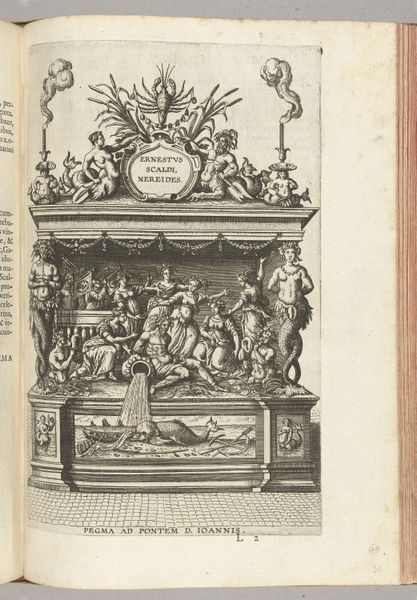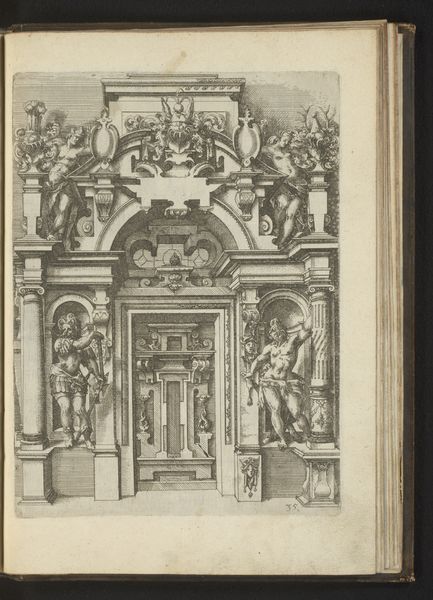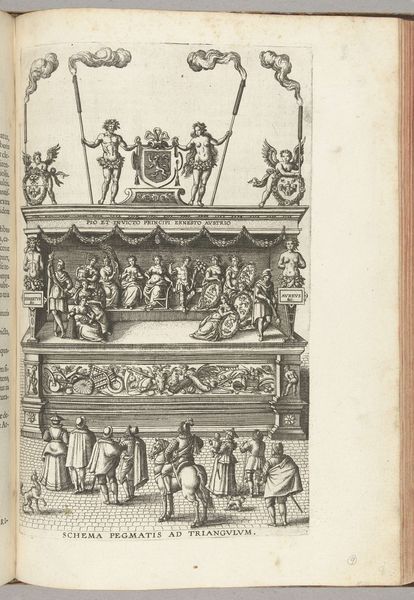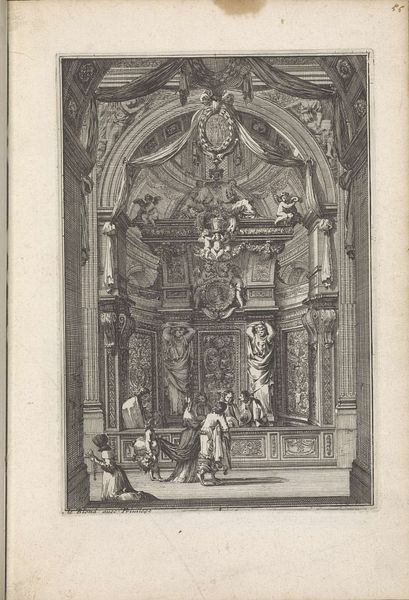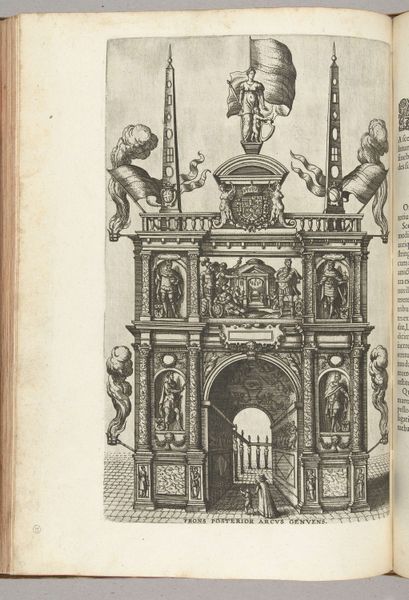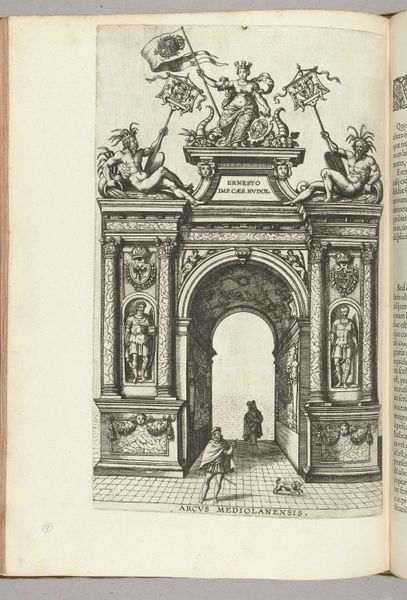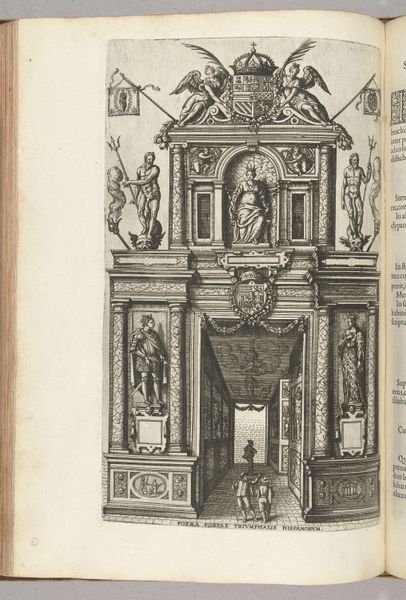
print, engraving
# print
#
mannerism
#
form
#
11_renaissance
#
line
#
cityscape
#
history-painting
#
engraving
Dimensions: height 325 mm, width 202 mm
Copyright: Rijks Museum: Open Domain
Pieter van der Borcht’s engraving depicts a triumphal arch erected in Lucca, Italy, in 1594. The print celebrates a visit by Ernest of Austria, governor of the Spanish Netherlands. These temporary arches combined classical motifs with contemporary political messaging, showcasing the power of the Habsburg rulers. We can see the architecture is adorned with allegorical figures, coats of arms, and Latin inscriptions, all intended to convey a sense of grandeur and authority. Note how the scene depicts Ernest processing through the city, reinforcing his role as a legitimate and celebrated leader. The visual codes employed here draw on a long tradition of triumphal imagery, dating back to ancient Rome. By associating Ernest with this history, the arch seeks to legitimize his rule and project an image of imperial power. To fully understand the print, we can consult archival records of the event, descriptions of the arch, and biographical information about Ernest himself. Examining how such imagery circulated through printed books helps us understand the public role of art and the politics of representation.
Comments
No comments
Be the first to comment and join the conversation on the ultimate creative platform.
